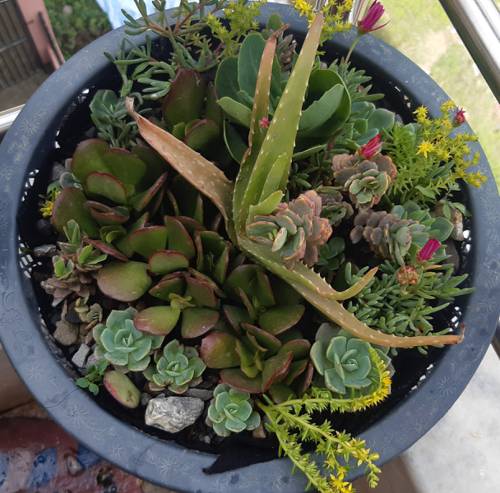
FAQ About Indoor Plant Acoustic Environment Enhancement

How do indoor plants enhance the acoustic environment?
Indoor plants can enhance the acoustic environment by absorbing, deflecting, and diffracting sound waves. The leaves, stems, and other parts of a plant can absorb high frequency sounds while the wood of their stems and trunks can absorb some of the lower frequencies. Additionally, the soil and pots can also contribute to the absorption of sound, reducing overall noise levels in a room and improving the sound quality within the space.

What are the best types of indoor plants for improving acoustics?
Some of the best indoor plants for improving acoustics include the Rubber Plant (Ficus elastica), Peace Lily (Spathiphyllum), Fiddle Leaf Fig (Ficus lyrata), and the Snake Plant (Sansevieria trifasciata). These plants have broad leaves and dense foliage which are effective at absorbing sound. Larger plants with more substantial leaf structures generally provide better sound absorption capabilities.

Where should indoor plants be placed for optimal acoustic benefits?
For optimal acoustic benefits, indoor plants should be placed in areas where sound is most problematic, such as near walls that reflect sound waves, corners where sound may gather, or between workstations in open offices to act as barriers. Placing plants in clusters can enhance their sound absorbing capabilities, and using plants at varying heights can also help diffuse sound more effectively throughout a space.

How many plants are needed to notice an improvement in sound quality?
The number of plants required to notice an improvement in sound quality varies depending on the size of the space and the plants. However, typically, a few well-placed clusters of large, leafy plants can make a significant difference in reducing noise levels. Starting with a few strategic locations and gradually adding plants can help find the right balance for sound management in your space.

Can the type of pot affect a plant's sound-absorbing abilities?
Yes, the type of pot can affect a plant's sound-absorbing abilities. Pots made from porous materials like terra cotta can absorb some sound themselves, which can enhance the overall acoustic benefit of the plant. Additionally, larger pots with more soil can contribute to absorbing lower frequency sounds.

Are there any specific environmental conditions needed for plants to absorb sound effectively?
While indoor plants don't require specific environmental conditions to absorb sound beyond their general care requirements, maintaining optimal humidity and temperature can keep plants healthy, enhancing their growth and sound absorption capabilities. Healthy plants with a full canopy absorb sound more effectively.

Do indoor plants only absorb sound or can they deflect it as well?
Indoor plants not only absorb sound waves but can also deflect them. The shape and structure of plants, along with their leaves, stems, and branches, can change the direction of sound waves, thus scattering and diffusing sound in various directions. This deflection helps in reducing echo and reverberation in enclosed spaces.

How do plants compare to other soundproofing methods?
Plants serve as a natural method for improving acoustics, but they generally provide less soundproofing compared to structured materials like acoustic panels or foam. However, plants offer additional benefits such as improving air quality, aesthetic appeal, and creating a natural ambiance. They can be used in conjunction with other methods to enhance overall sound management.

What size plants work best for indoor acoustic improvement?
Larger plants typically work better for indoor acoustic improvement as they have a greater mass and foliage area, which contribute more significantly to sound absorption. Plants such as large ferns, rubber plants, or palms can provide effective sound absorption in indoor settings.

Can hanging plants contribute to sound absorption?
Yes, hanging plants can contribute to sound absorption. They can help break up sound waves before they reach walls or ceilings, reducing echoes and noise levels. Combining hanging plants with floor-standing plants can effectively increase the acoustic benefits within a space, as sound is absorbed at different levels.

Do indoor plants help with specific types of noise, like echoes or background chatter?
Indoor plants are particularly effective at absorbing high-frequency noises such as background chatter and reducing echoes. Their foliage can intercept sound waves and reduce reverberation, making them useful in spaces like offices, living rooms, and areas where clear communication is important.

How should plants be arranged to act as sound barriers?
To act as sound barriers, plants should be arranged where noise transmission is a concern, such as between workspaces or in front of highly reflective surfaces. Tall plants should be placed near walls, and dense, leafy plants should be positioned as partitions. Using multi-layer arrangements of plants can create more effective sound barriers.

Can sound waves damage indoor plants?
Normal sound waves within an indoor environment do not damage plants. In fact, some studies suggest that sound waves can stimulate certain plant growth. However, excessively loud environments may stress plants similar to how they can affect humans, though such conditions are rarely encountered in typical home or office settings.

Are there any low-maintenance plants that are effective at sound absorption?
Indeed, there are low-maintenance plants that are effective at sound absorption. Options like the Snake Plant (Sansevieria), ZZ Plant (Zamioculcas zamiifolia), and Pothos (Epipremnum aureum) require minimal care while providing substantial foliage for sound absorption, making them ideal for those seeking low-maintenance acoustic solutions.

Can indoor plant acoustic arrangements be used in public spaces?
Yes, indoor plant acoustic arrangements can be highly effective in public spaces like libraries, restaurants, and offices. In such environments, strategic placement of plants enhances acoustic privacy, reduces overall noise, and improves the ambiance, contributing to a more comfortable environment for patrons and employees alike.

Do open-plan offices benefit from indoor plant acoustics?
Open-plan offices greatly benefit from indoor plant acoustics. Plants can help mitigate noise levels, increase privacy, and reduce distraction caused by background chatter, making them vital in maintaining a focused and productive workspace. Their presence can also create more visual privacy without the need for harsh partitioning.

How can plants be used in combination with other acoustic solutions?
Plants can be used alongside other acoustic solutions such as sound-absorbing panels, carpets, or curtains to create a comprehensive sound management strategy. The use of plants adds an additional layer of soft, natural sound absorption and can aesthetically complement the more structural acoustic materials.

Do certain types of foliage absorb sound better than others?
Yes, certain types of foliage are more effective at sound absorption. Broad, thick, and lush leaves tend to absorb sound more effectively than narrow or sparse foliage. Plants like the Rubber Plant or Peace Lily, with their broad leaves, are particularly good at absorbing sound.

Can artificial plants provide the same acoustic benefits as real plants?
Artificial plants generally do not provide the same acoustic benefits as real plants. While they might aesthetically contribute to a space and provide very minimal sound dampening, they lack the organic structures found in real plants that effectively absorb and deflect sound waves.

Is it possible to overpopulate a space with plants for acoustics, negatively impacting the environment?
While adding plants can benefit both acoustically and aesthetically, overpopulating a space with too many plants could lead to a cluttered environment. This may impede movement and visual space, making the area feel cramped. It's important to balance plant placement for acoustics with the need for functional and open space.
